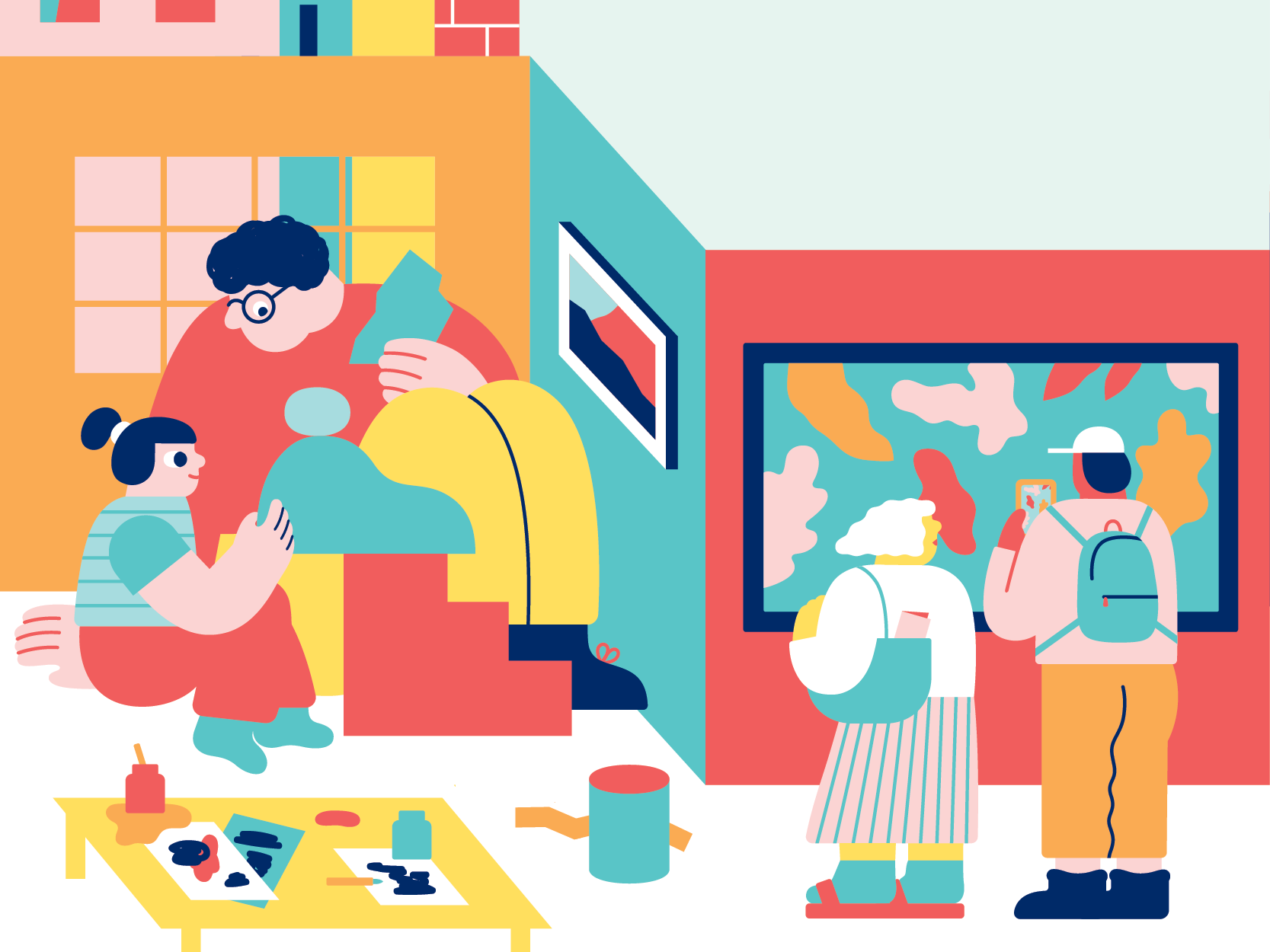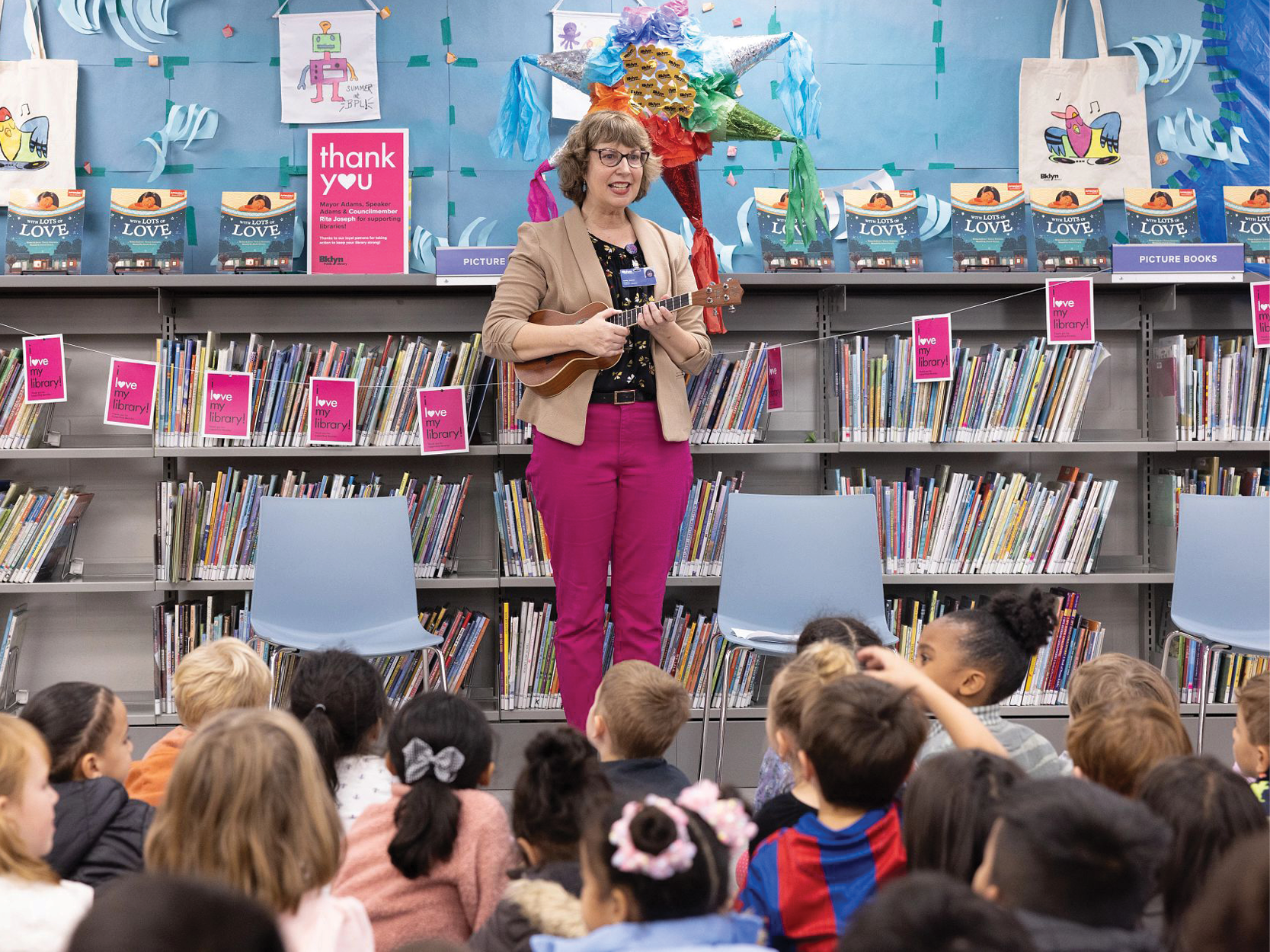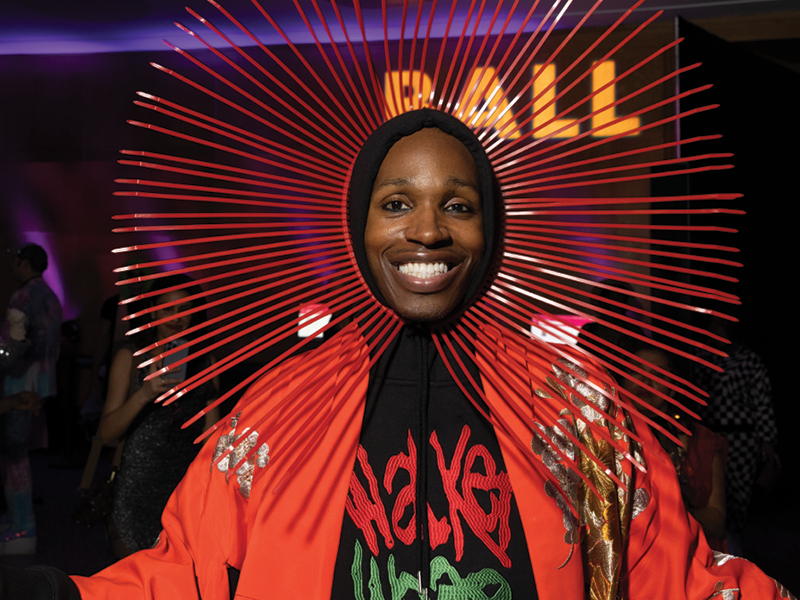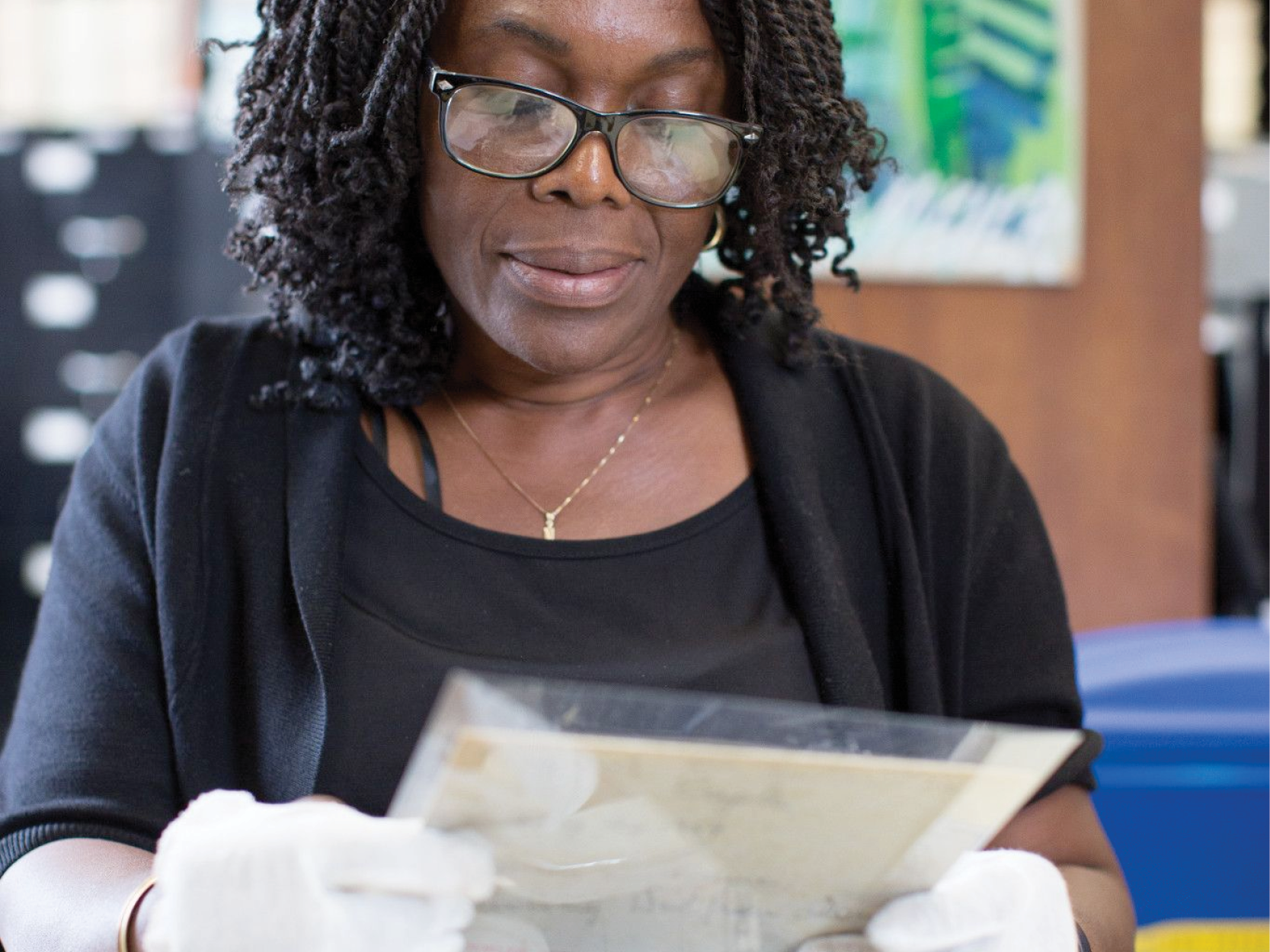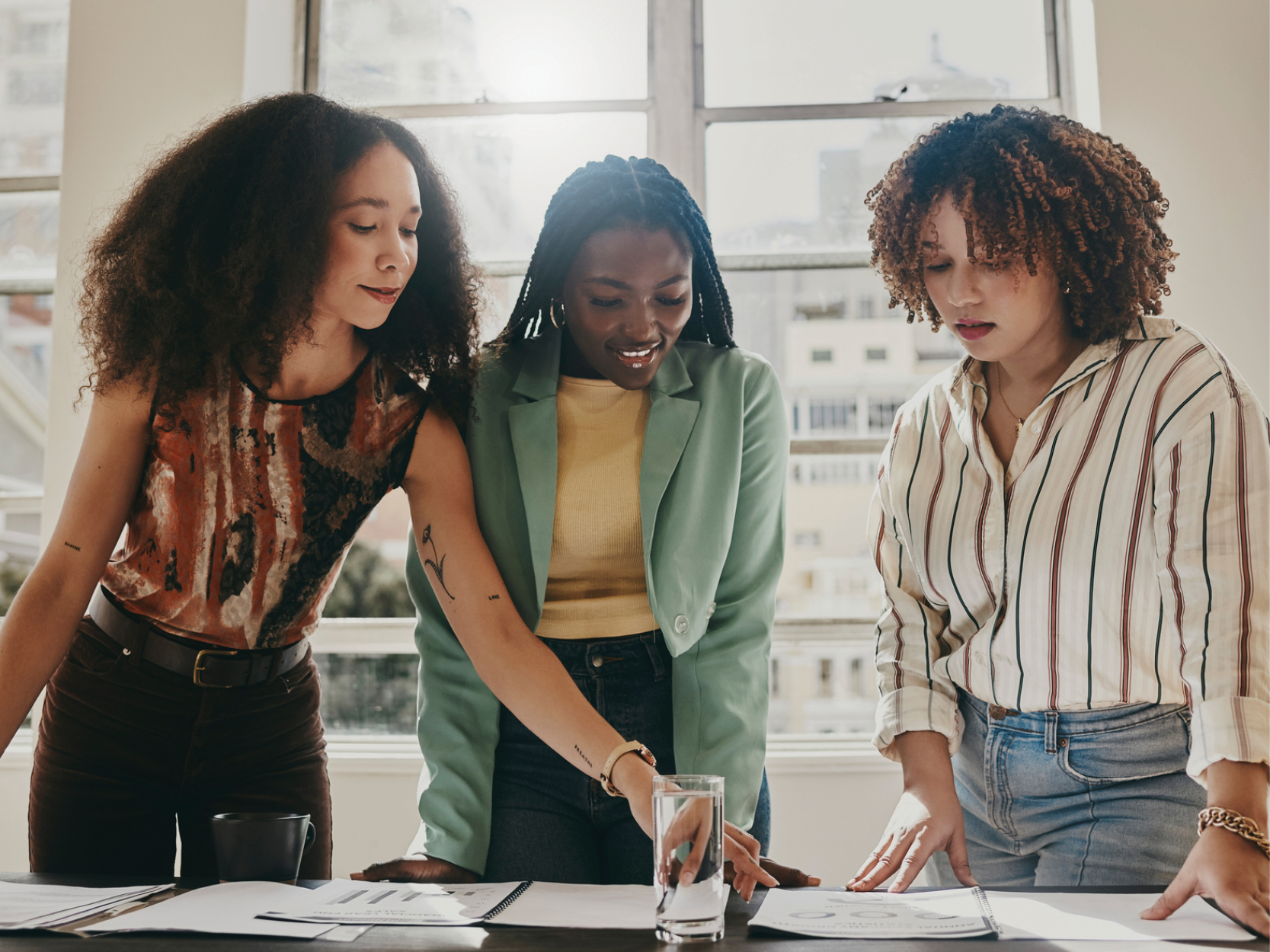*This exhibition has been extended.
For more than 35 years, Bebonkwe Brown’s trailblazing creative practice has centered and celebrated matriarchal Amerindian cultural, artistic, and decolonization practices, while incorporating Western iconography, artistic genres, language, media, and technology into artworks. Her focus in more recent years on painting involves avant-garde continuations of ancestral Plains First Nation’s fem-centric abstraction and adornment practices.
Urban Skins & Ancient Kin exhibits a group of photo-based paintings, installed across the south wall of Brooklyn Heights Main Hall. Featuring eloquent layers of painterly, abstract photographs of the 'urban skin', tribal geometries and culturally significant three-dimensional adornments, these pieces embody longstanding Indigenous land-based practices within the hyper-urban environment of Lenapehoking (a.k.a NYC). Throughout her 16 years based in Brooklyn, the artist has been gathering both lens-based imagery and physical materials as part of traditional gathering practices involving walking the urban landscape, observation, and reciprocity. She then employs reverential yet pointed combinations of natural and salvaged materials with Western technological elements, such as digital images and 3D-printed objects.
Like the exhibition artworks, the term ‘Urban Skin’ is layered. It is Bebonkwe’s name for the expressive surfaces of a city she engages with as a living entity and creative collaborator, who’s visual voice contains both human and non-human mark-making. She interacts with the urban land with the understanding that it is just as alive and inhabited by Ancestors and Relatives as in any other place.The word ‘Skin’ also has a colonial history as a derogatory word for a Native person yet has been reclaimed and repositioned as an affectionate name Native people sometimes call one another. So ‘Urban Skin’ is also a name, both playful and pained, for a Native person living within the city, referencing the deep relationship between person, city, and their tribal and colonial histories.
Some Urban Skins & Ancient Kin artworks are further layered into tribal geometries, the chevrons and fields of circles containing cultural meaning and practice, now rendered in digital media. Some pieces include snippets of language, adding to the city’s narrative and creating a dialogue with the library as a container of predominantly Settler-written word and histories. They also personify the long-standing, layered incorporations of language, wordplay, and the dichotomies of written and oral cultures common in Bebonkwe’s work.
The city-gathered physical elements adorning some pieces are also rooted in traditional First Nations culture. They include Cree and Lenape plant and animal relatives and food sources, sometimes painted to appear metallic, or printed as 3D objects. Others are hand-collected street refuse, repositioned as tribal iconography. All are metaphoric of cultural and environmental damage, relationship, and recovery.
The position of city-based Indigenous artists and the kinship and decolonization practices embodied in the artworks in Urban Skins & Ancient Kin are particularly relevant in this moment and location, while acknowledging the work of these artists is long overdue. With eco crisis having reached a point of high visibility and escalation, and the majority of both First Nations and Settler populations now living in urban centers, re/membering sustainable relationship with the land within urban centers is crucial. And yet most cities’ design and dominant culture/s exemplify and deepen disconnection with the Earth. Although statistics confirm that Native people’s already exceptionally heavy challenges usually escalate when living in urban settings, those Indigenous urban artists who practice their cultures are simultaneously in the unique and invaluable position of carrying cultural knowledge, perspectives, and creative vision that is keystone to rebalancing good relationship with our planet, especially when living in the city.
Contained in the highly contemporary and combinatory approach of Bebonkwe’s work is a deeply traditional one that embodies Native cultural resilience, through the ‘good medicine’ of creativity, beauty, innovation, and tenacity.
About the Artist
Bebonkwe Brown ᐱᐳᐣ is a contemporary multi-media Plains Cree/Anishnawbe/Metis Nation artist from Amiskwaciwâskahikan (Edmonton), Alberta, Canada, now based in Brooklyn since 2006. She studied fine arts in London (UK) and Toronto, and apprenticed in traditional First Nations art forms and ceremonial practices with respected elders and traditional artists. Her work has been exhibited, screened, collected and performed internationally. She’s received the prestigious Chalmers Arts Fellowship (OAC) and project awards from the Canada Council for the Arts, Ontario Arts Council and the Alberta Foundation for the Arts, as well as being a juror for these arts funding bodies and a First Nations cultural advisor and speaker for various institutions and exhibitions. Her recent residencies include the Indigenous Futurisms Residency at the American Indian Community House, The Lower Manhattan Cultural Council Arts center (both on Governors Island, NYC), and the McColl Residency in Charlotte, NC.
Bebonkwe is also known as Jude Norris, Kihiw Mihtatakwan Awasis and sometimes Nia Lova.
Preview the Exhibit
Brooklyn Public Library’s Folk Arts program is supported by funds from the New York State Council on the Arts.
This project was supported, in part, by a Foundation for Contemporary Arts Emergency Grant.

